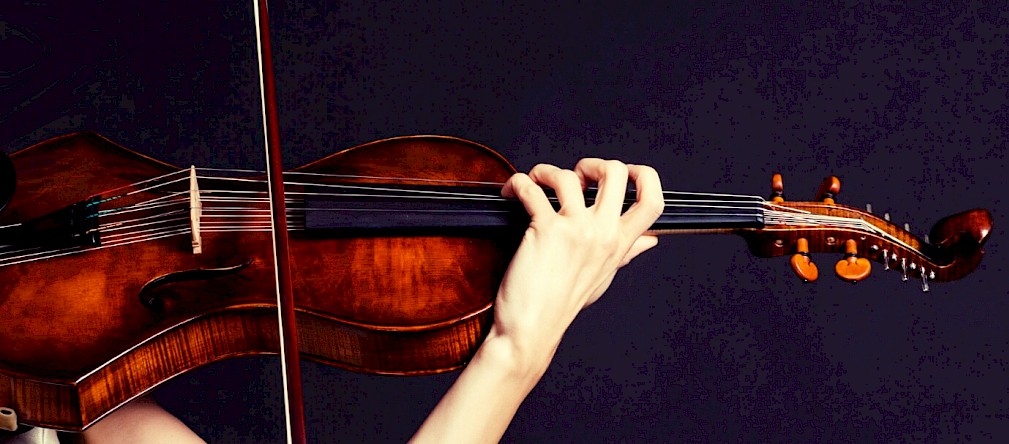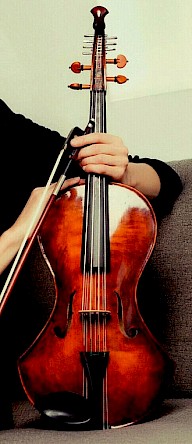The Viola Campanula
belongs to a class of innovative string instruments which feature a number of resonating strings in addition to the regular strings.
 Inspired by the Indian Sarangi, the German instrument maker Helmut Bleffert began to apply the concept of resonating strings to regular classical instruments in the 1980s. He developed a stringed instrument in the shape of a bellflower and gave it the name "Campanula", which is the Latin term for "bellflower". There are Campanula violins, Campanula cellos and Viola Campanulas.
Inspired by the Indian Sarangi, the German instrument maker Helmut Bleffert began to apply the concept of resonating strings to regular classical instruments in the 1980s. He developed a stringed instrument in the shape of a bellflower and gave it the name "Campanula", which is the Latin term for "bellflower". There are Campanula violins, Campanula cellos and Viola Campanulas.
 The pictures show the first model of the Viola Campanula with 7 resonating strings. The intense involvement with the instrument led to the addition of four more sympathetic strings. As a result, a total of 11 strings resonates with every note, leading to a rich and well-balanced sound. Even though the instrument is held and played like a traditional classical string instrument, it develops a unique character and tone.
The pictures show the first model of the Viola Campanula with 7 resonating strings. The intense involvement with the instrument led to the addition of four more sympathetic strings. As a result, a total of 11 strings resonates with every note, leading to a rich and well-balanced sound. Even though the instrument is held and played like a traditional classical string instrument, it develops a unique character and tone.
Various listeners perceive the sound of the Campanula quite differently. Some describe it as "spherical", reminiscent of sacred harmonies. The resonating strings create a multilayered sound, rich in nuance and overtones. The resulting sound space allows the player to explore new ways of interpretation and musicality.
 More information about the Campanula can be found at the homepage of the inventor Helmut Bleffert:
More information about the Campanula can be found at the homepage of the inventor Helmut Bleffert:
http://www.helmut-bleffert.de/
Markus Schönewolf is one of the first composers who composed for the Viola Campanula. You can read about his impressions here: